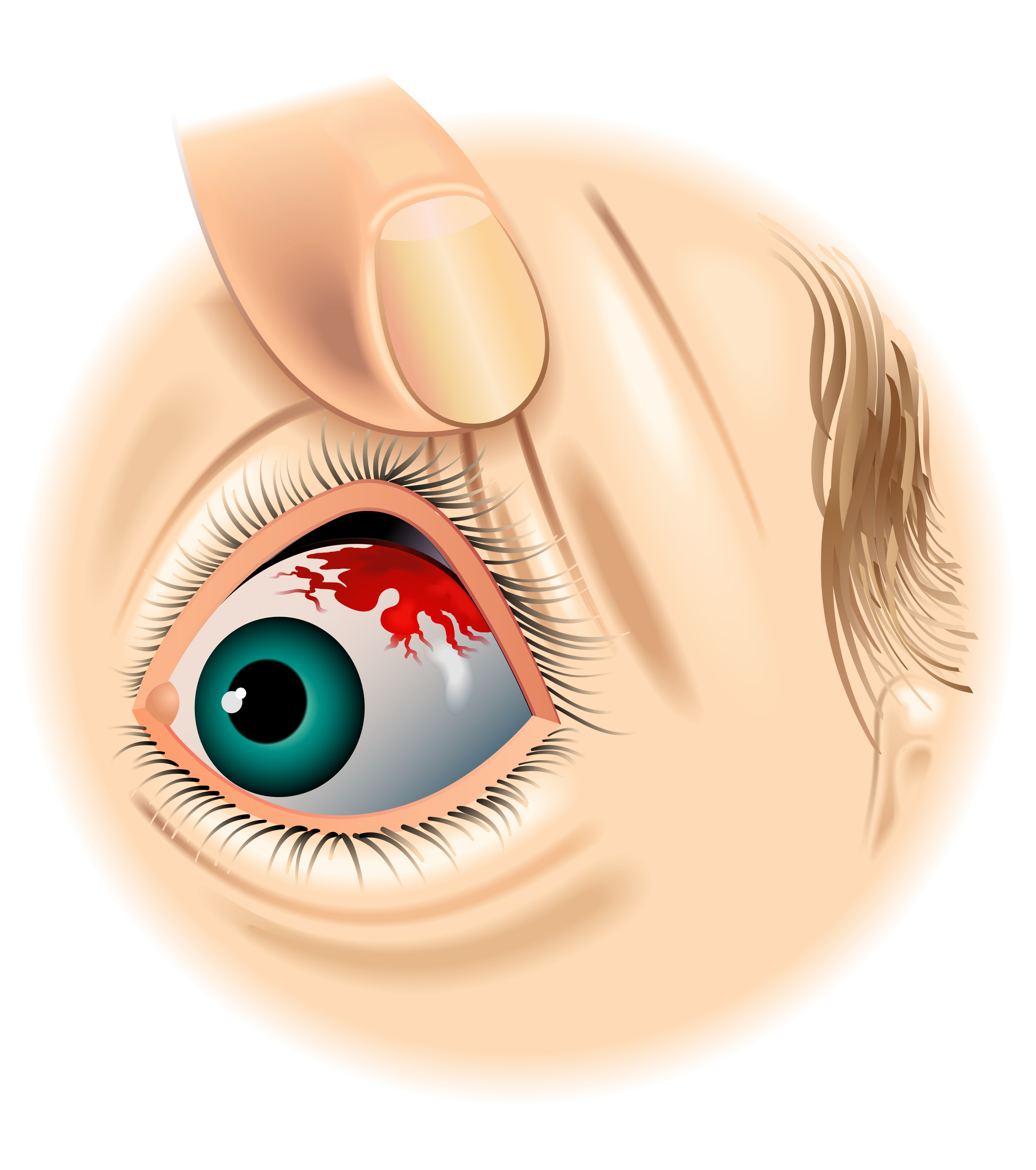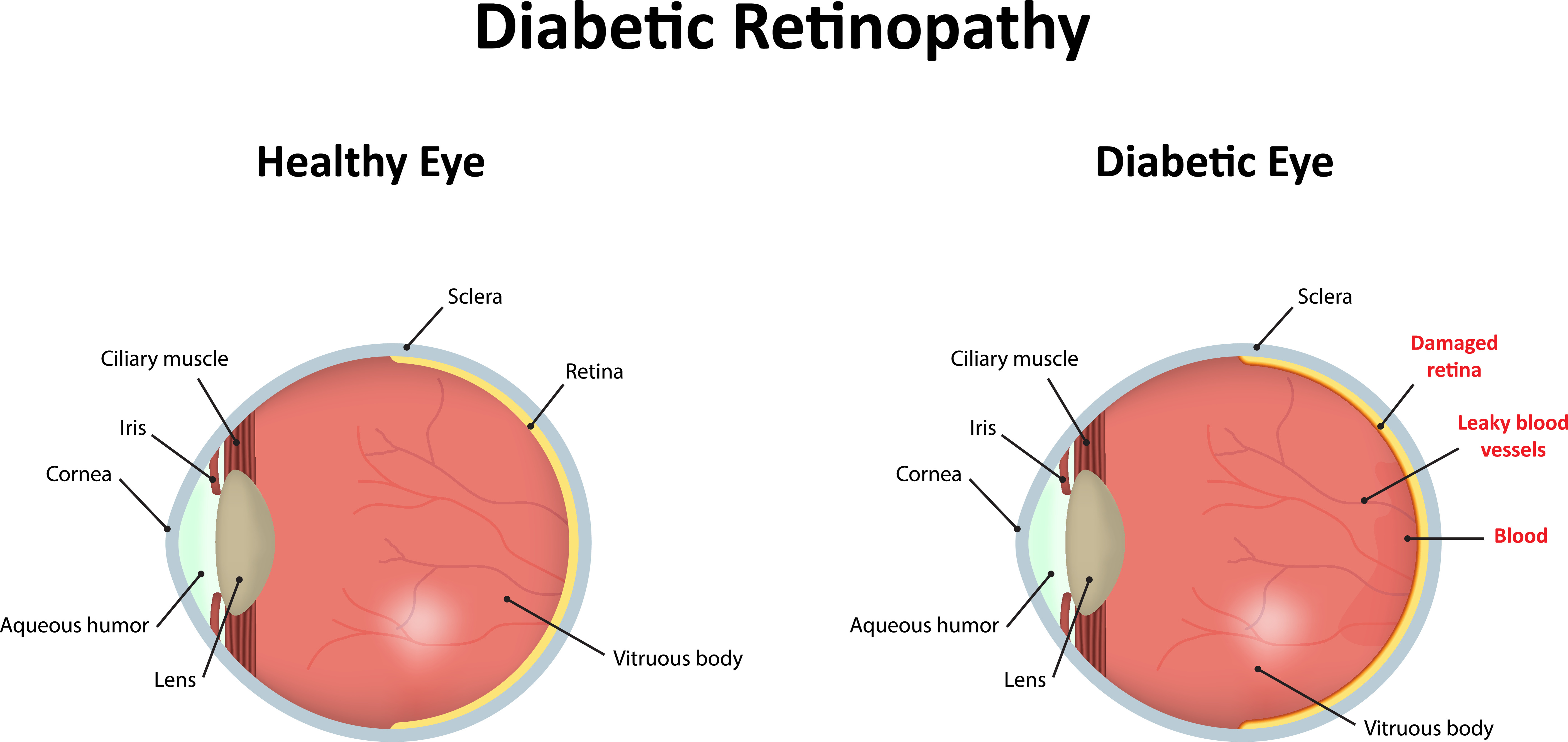Updated on October 9, 2024
What Can Cause a Red Spot on the Eye?


Vision Center is funded by our readers. We may earn commissions if you purchase something via one of our links.
Overview: Red Spot on Eye
Red spots on the whites of your eyes can often result from a subconjunctival hemorrhage, a broken blood vessel. Although they’re typically harmless, it’s best to consult a doctor. Doing so can rule out potentially serious conditions, even if you already know the cause.
Are Red Spots on the Eye a Medical Emergency?
Red spots on the eye are rarely a medical emergency. They usually indicate something you can address at home with proper care and treatment.
However, if the red spot involves vision loss or severe pain, seek medical help immediately. This will help you heal symptoms and address or prevent further complications.
7 Potential Causes of Red Spots on Your Eye
Here are some conditions your eye doctor will consider if you develop a red mark on your eye:
1. Eye Injury
An eye injury can cause bleeding, resulting in a red spot on the eye. For example, you may get poked in the eye, or something may fly into it.
Even mild trauma, like rubbing your eyes slightly too hard, can cause broken capillaries and red spots. To avoid eye injury, consider wearing protective eyewear at work or while playing sports, especially if you’re exposed to flying objects or debris.
2. Subconjunctival Hemorrhage (Broken Blood Vessel)
A red spot on the eye often indicates a burst of tiny blood vessels, with blood moving underneath the conjunctiva. This may spread across the eye's white.

Subconjunctival hemorrhages may seem alarming. However, they usually cause no pain, irritation, or light sensitivity.
This condition is similar to skin bruises but more visible due to the clear conjunctiva over the sclera. Common causes include trauma, constipation, straining too much, heavy lifting, diabetes, and high blood pressure.
3. Diabetic Retinopathy
While not a typical cause of red spots in the eye, diabetic retinopathy is a common cause of vision loss in people with diabetes. It involves retinal blood vessels leaking or bleeding, leading to symptoms like floaters and blurry vision.

Eye floaters appear as spots or lines moving through your vision. The retina’s location at the back of the eye means these red spots aren't visible.
The only way to determine if you have diabetic retinopathy is to see your eye doctor. If you have diabetes, schedule a comprehensive dilated eye exam annually or as your doctor advises.
4. Blood Pressure Spike
Anything that makes you strain can quickly and temporarily spike your blood pressure. Straining can break capillaries in your eyes, leading to red spots.
Examples of straining activities include:
- Coughing
- Sneezing
- Vomiting
- Bowel movements
- Childbirth
- Heavy lifting
5. Contact Lens-Related Irritation
Wearing contact lenses can sometimes lead to eye irritation and redness. This is particularly true if dust or debris gets trapped behind them. To manage and prevent irritation:
- Remove and clean lenses: If you feel something in your eye, promptly remove and clean the contact lens thoroughly.
- Adhere to the wearing schedule: Avoid wearing contact lenses longer than your eye doctor recommends, and replace them as necessary.
- Wear sunglasses outdoors: Protect your eyes from wind, dirt, and debris while outside.
- Use eye protection: Use appropriate eye protection in sports or activities where objects might fly into your eye.
Rubbing your eyes when they’re irritated can exacerbate the problem. It can also lead to further redness or even broken blood vessels.
6. Blood Disorders
Sickle cell disease, an inherited bleeding disorder, causes chronic anemia and intermittent pain. Blood cells with abnormal shapes cause it by hindering hemoglobin and oxygen transport.
This condition can lead to dilated or abnormal blood vessels in the conjunctiva, with sickling red blood cells causing minor blockages. Additionally, blood clotting disorders like hemophilia or von Willebrand disease, though rare, can increase the risk of red spots in the eyes.
7. Certain Medications
Some medications thin the blood, making bleeding easier. This can occur if you frequently take aspirin or if you take interferons.
Other blood thinners include:
- Apixaban (Eliquis)
- Dabigatran (Pradaxa)
- Enoxaparin (Lovenox)
- Heparin
- Rivaroxaban (Xarelto)
- Warfarin (Coumadin, Jantoven)
How Are Red Eye Spots Diagnosed?
Your doctor can diagnose a red spot on the eye by looking at it with tools like a slit lamp or an ophthalmoscope. You’ll likely undergo a comprehensive eye exam if you have symptoms that suggest something more serious.
Your physician may also ask questions about your symptoms. They may ask how long the spot has been present and if it's causing pain or discomfort.
Some doctors may sample the fluid from the red spot and send it to a lab for testing. This can determine if an infection caused the red spot.
How to Treat Red Spot on the Eye
Here are ways to treat a red spot on the eye:
Home Remedies
Cold compresses and artificial tears can keep the eye comfortable. This is in case any tissue elevates because of a more extensive hemorrhage.
Professional Treatment
A cherry red spot on your eye will typically clear up within a few days or weeks. Generally, treatment consists of a medical evaluation and reassurance that the red dot will disappear.
If the bleeding is significant, it may take longer than a week. It may also turn into a yellowish, bruise-type shade before fading.
Treatment for Diabetic Retinopathy
If you have diabetic retinopathy, vision loss resulting from the medical condition can be irreversible. However, treatment can lower the risk of blindness by 95 percent.
Treatment for diabetic retinopathy includes:
- Injected or implanted corticosteroids
- Anti-vascular endothelial growth factor (VEGF) injections to prevent the protein that triggers the growth of abnormal, leaky blood vessels
- Laser treatment to lessen swelling and fluid leakage
- Eye surgery to repair a detached retina, remove scar tissue, or remove the vitreous (vitrectomy)
- Diabetes management
Summary
Various factors can cause red spots in the eye. Learning about the different causes and treatments can help you better understand how to manage the condition.
Home remedies can keep the eye comfortable. However, professional treatment may be necessary for more severe cases.
In this article
8 sources cited
Updated on October 9, 2024
Updated on October 9, 2024
About Our Contributors
Ellie is a full-time freelance writer with a diverse portfolio in the medical field, including a focus on optometry. She crafts content in areas such as dentistry, addiction, mental health, and eye care. Her mission is to produce authoritative and research-backed optometry content, guiding readers to take care of their eyesight and seek necessary treatments.
Dr. Melody Huang is an optometrist and freelance health writer with a passion for educating people about eye health. With her unique blend of clinical expertise and writing skills, Dr. Huang seeks to guide individuals towards healthier and happier lives. Her interests extend to Eastern medicine and integrative healthcare approaches. Outside of work, she enjoys exploring new skincare products, experimenting with food recipes, and spending time with her adopted cats.

